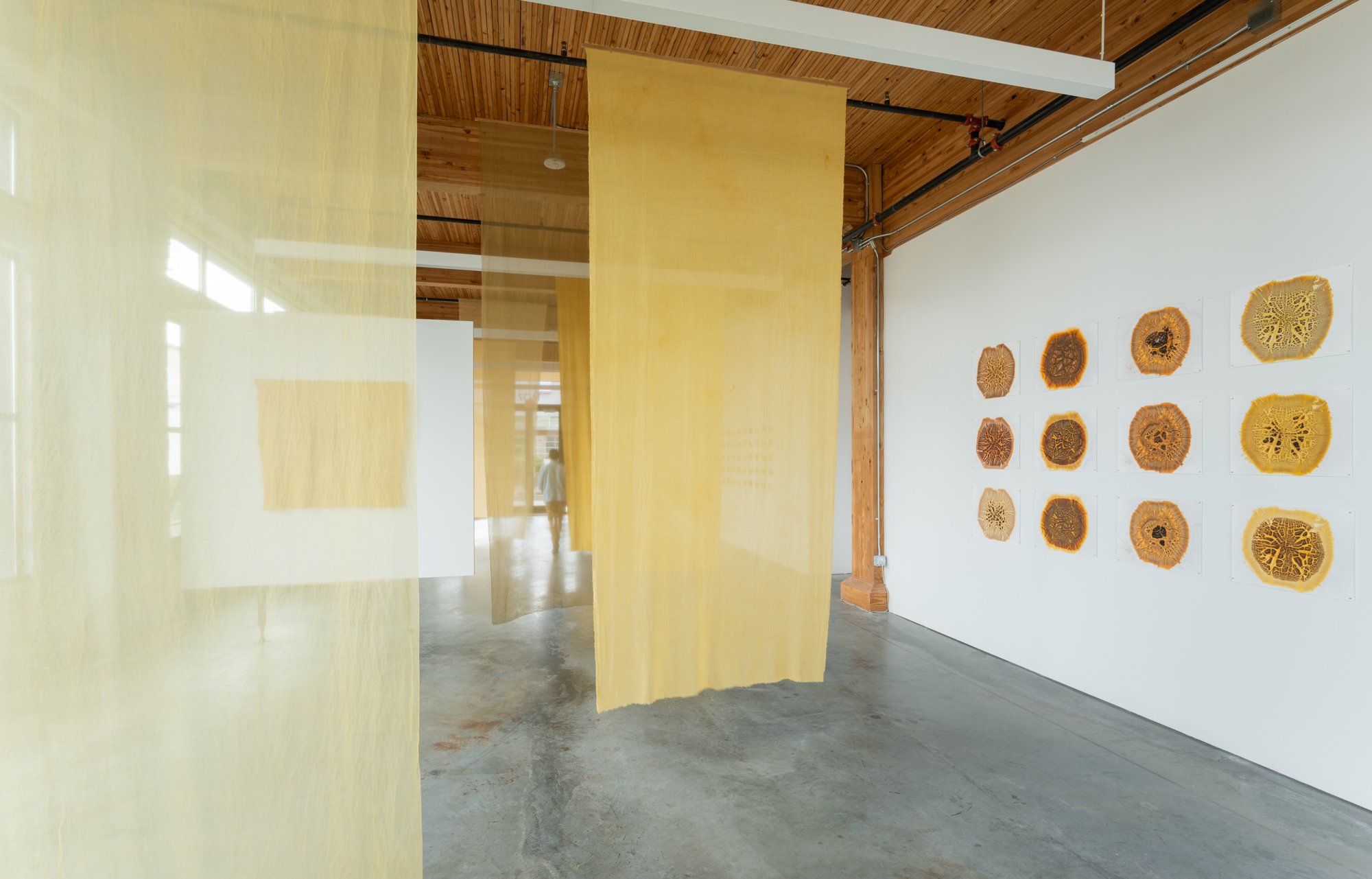
Take Root
Julie Beeler
September 7— November 2, 2024
Opening Reception: Saturday, September 7th, 5-7pm
Closing Reception: Saturday, November 2nd, 5-7pm
The artist in conversation with Wildcraft Studio School founder, Chelsea Heffner
Gallery Hours: Saturdays, 12-4pm
or by appointment, contact hello@satorprojects.com
1607 SE 3rd, 97214
Fungi are all powerful beings that have transformed and given life to the world as we know it. It is impossible to ignore our impact on the planet, how quickly everything is changing, transforming, and transitioning. Fungi hold within them the ability to solve a variety of issues we face during these times of environmental climate crisis. One of these super powers is the universe of colors lurking inside mushrooms, mirroring the vast array of hues we see in the natural world, yet they are invisible and hidden in an immense underground fungal network of life that represents a new frontier. They have the ability to transform the dye, textile and fashion industries. An industry that creates around 10% of global CO2 emissions, more than international flights and maritime shipping combined. The textile industry is responsible for polluting about 20% of global clean water and washing synthetic products has caused more than 14 million tons of microplastics to accumulate on the bottom of the oceans. It is an industry that can immensely benefit from fungi with scientists, chemists and mycologists at the cusp of growing fungi for color at scale.
In a new body of work, Beeler displays the chromatic interplay of hues created from a single, massive mushroom. Large textile “tree totems” accompany a series of dyed and embroidered textile pieces, mono prints, and photographs which visualize its relationship to the environment and create a portrait of our local ecosystem.
Moving through the works and spectrum of hues reveals the process of coaxing color from fungi. A series of photographs illustrate the process of creating pigments from the dried and ground mushroom by highlighting the “lakes” that will become the paint to create the subsequent works. As images themselves, they are topographical, mycelial, bodily, and illustrate the symmetries found throughout the natural world. A collection of pigmented watercolor and oil paint studies depict the experimentation process that is at the heart of all artistic pursuits, each column a collection of variations from its respective pigment.The “tree totems” stand as a grove throughout the space, both as pillars of rich fungi-derived color and a reminder of the symbiotic relationship between the tree and fungi. Four intricately embroidered textile works tell the story of this particular “butt-rot” mycelium weaving it’s way out from the root system to the tree, ultimately breaking it down to complete another cycle of the wheel. In homage to the mushroom that itself had to be broken down to give life to this exhibition, fellow artist and partner Brad Johnson diligently photographed and then digitally recreated the mushroom to offer it’s presence to the textile grove.
We invite you to discover the fungi, investigate the invisible colors and pigments, imagine the underlands, and spread like mycelium throughout the space.
ABOUT THE ARTIST
Julie Beeler is an acclaimed designer, artist, and educator with a deep love and curiosity for the natural world. Her work has been featured by The New York Times, Popular Science, The Smithsonian Institution and The Royal Botanic Gardens, Kew, among others.
She created the Mushroom Color Atlas website to honor and celebrate the universe of resplendent color that exists in the fungi kingdom, making it accessible to people around the world. Her book The Mushroom Color Atlas, recently published by Chronicle Books, is a comprehensive primer on the universe of colors lurking inside fungi. It is equal parts art book, field guide, and dye-making workshop. In every form, her effort is a timeless reference that will be used for years to come.
Julie’s work inspires new ways of thinking about the possibility and power of natural color and supports an important, scalable trend and innovation to the benefit of the greater good: moving people away from synthetic colorants to those readily available in nature. She is equally inspired to experiment, discover, and contribute to our expanding knowledge and appreciation of fungi.
Prior to immersing herself in the wonder of the fungi kingdom, Julie spent a decades-long career at the vanguard of interactive design. As co-founder of Second Story, she worked with many of the world’s greatest museums and cultural institutions crafting immersive environments that blended the digital and physical worlds. For seven years, she was on the faculty of PNCA and OCAC, and now is a teacher at Wildcraft Studio School in Portland. In 2018 she founded Bloom & Dye, a natural dye studio and farm in the Pacific Northwest ideally situated for foraging mushrooms, growing fresh-cut color, and creating fine art.


























